The OnePlus One Review
by Joshua Ho on November 19, 2014 8:00 AM EST- Posted in
- Smartphones
- Android
- Mobile
- OnePlus
Camera UX
For the most part, the OnePlus One has a generally standard camera system for 2014 smartphones. With a 6P lens system, F/2.0 aperture, and Sony IMX214 camera sensor, the OnePlus One has a relatively standard camera system for today's smartphones. The focal length is similar to most smartphones on the market at a relatively wide 3.8mm length, which makes it equivalent to a 28mm focal length when accounting for the crop factor of the sensor. The front facing camera has an OmniVision OV5648 sensor, which is a 5MP, 1.4 micron, 1/4 inch sensor, with an F/2.0 aperture at 2.67mm focal length. This means that the field of view is similar to the rear-facing camera at about 29mm accounting for the crop factor.
While the camera hardware is relatively standard, the camera interface is definitely a unique take, and is the first time that I've been able to use Cyanogen's camera UI. In general, this UI feels like a mix of the old Google Camera, along with an immense amount of complication and not much explanation. For example, in the settings there's an ISO selection menu. While this is nothing to talk about normally, there's a setting called "Auto (HJR)". The only way for me to learn about this setting is by searching for it on Google, which explains that it favors higher ISOs to reduce the effects of shaky hands. As of the latest 44S update, this crashes the camera any time I try to take a photo in low light. To further explain the point, there are plenty of options in the video size setting, but a huge number of them are completely unexplained. While one might easily guess what 4K UHD or HD 1080p is, I find it difficult to believe that 4k DCI, CIF, or QCIF are self-explanatory. Interestingly enough, turning RAW capture on or off also has an effect on the maximum shutter speed, something that isn't actually detailed anywhere.
While an unfamiliar UI is not really a massive issue, there are some fundamental flaws with how the UI works. One of the most obvious flaws is the aspect ratio of the preview, which is 16:9, when output images can have a 4:3 aspect ratio. This makes it impossible to accurately frame an image. In order to do the ISO chart test, it was necessary to use Google Camera to frame the chart before switching back to the Cyanogen camera.
In addition to all of this, the scene selection UI doesn't have much thought put into it. All filters and all scene modes are integrated into a single menu, which is navigated by swiping up and down on the preview. This wouldn't really be an issue but when there are 31 options to swipe through this really gets to be a bit much to handle. There is a list option that can be found by going through the menus though, which is a bit better at organizing information. Unfortunately, most of the scene options are a bit nonsensical. The "night" modes don't actually change anything (ISO and shutter speed seem to be identical), and pretty much everything else is unclear on what it does. The one interesting mode is the slow shutter mode, which sets ISO to 100 and allows the exposure time to go as high as 8 seconds for high-quality photos on a tripod. This is also broken as of the 44S update, which causes the camera to crash until the phone is rebooted. I suspect that OnePlus is better off exposing full manual controls instead of trying to cover every possible edge case with a large number of scene modes that may or may not change anything. There's also no way to get a grid to try and frame images properly.
Speaking of ISO and shutter speed values, while the camera UI was mostly responsive in previous versions, around the 38R OTA I saw a dramatic shift in the auto exposure algorithm as it went from a maximum of 4500 ISO and around 1/11 second shutter speed to 4100 ISO and 1/6 second shutter speed. This has effectively made it impossible to use the camera at night, as there is no OIS present to reduce the effects of even slight hand shake. Overall, all of these issues make the OnePlus One quite frustrating to use as a camera.
Aside from these niggles with the camera application that can generally be resolved by using Google Camera, another area of evaluation is shot to shot latency, along with focus latency. To this end, the device was tested by pointing the camera at the ISO chart with strong lighting to be able to reach base ISO and timing how long the camera took to focus on an object along with how quickly the device could take a photo.
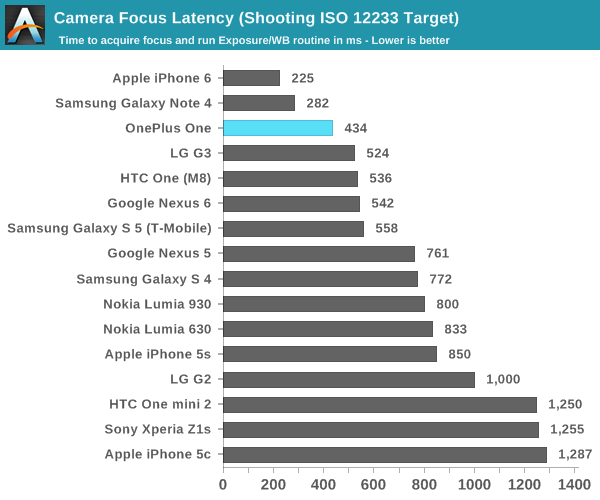
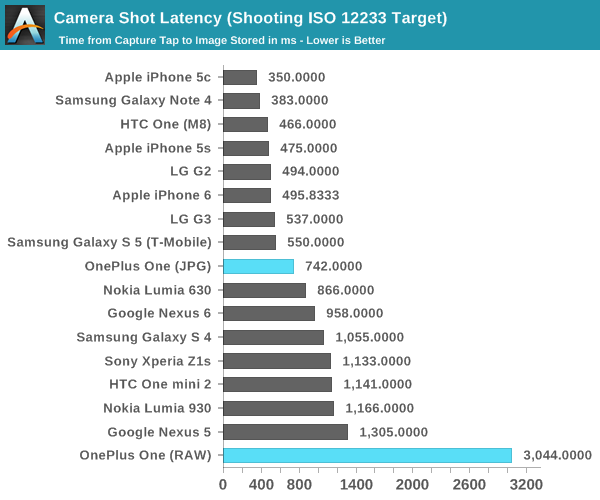
The OnePlus One does do surprisingly well in our focus test, setting a rather respectable focus latency around the same speed as the competition. On the other hand, the default capture speed is really quite long, although this is really mostly due to the RAW capture as turning off RAW capture dramatically speeds up response time in the camera to a much more respectable ~750 ms.


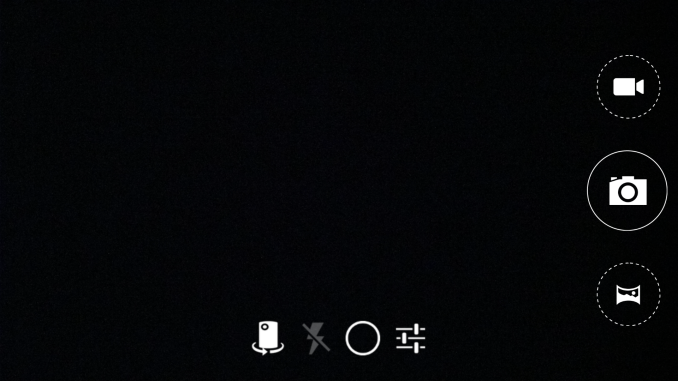

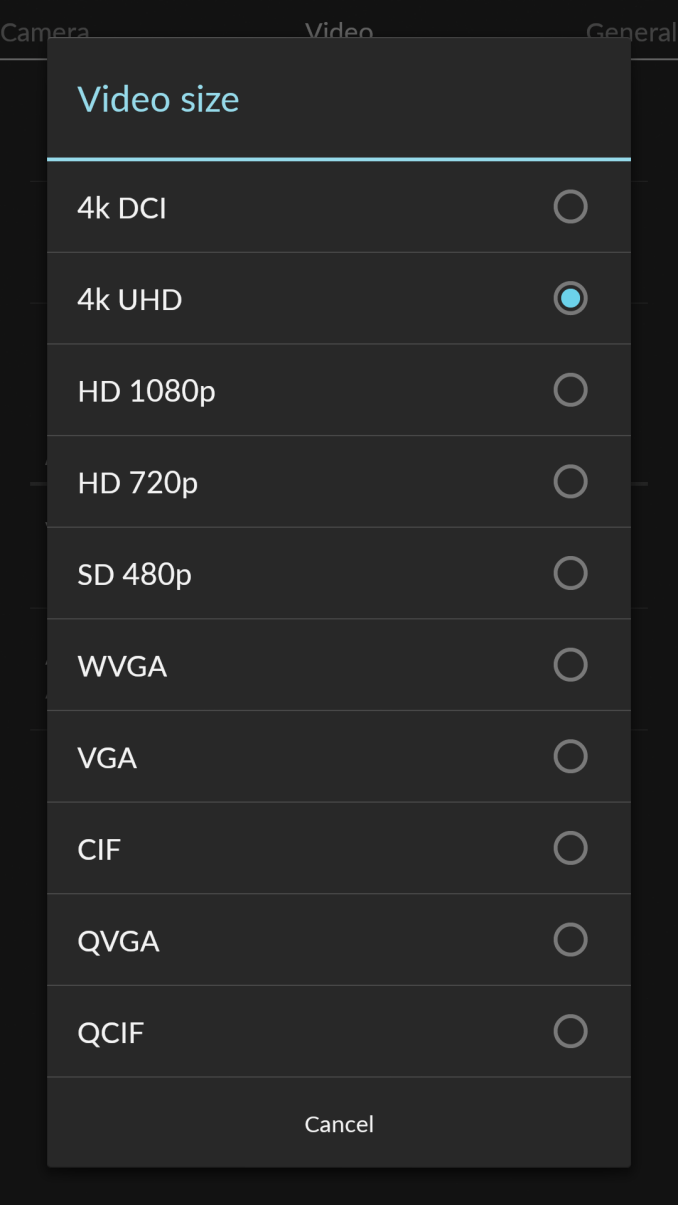


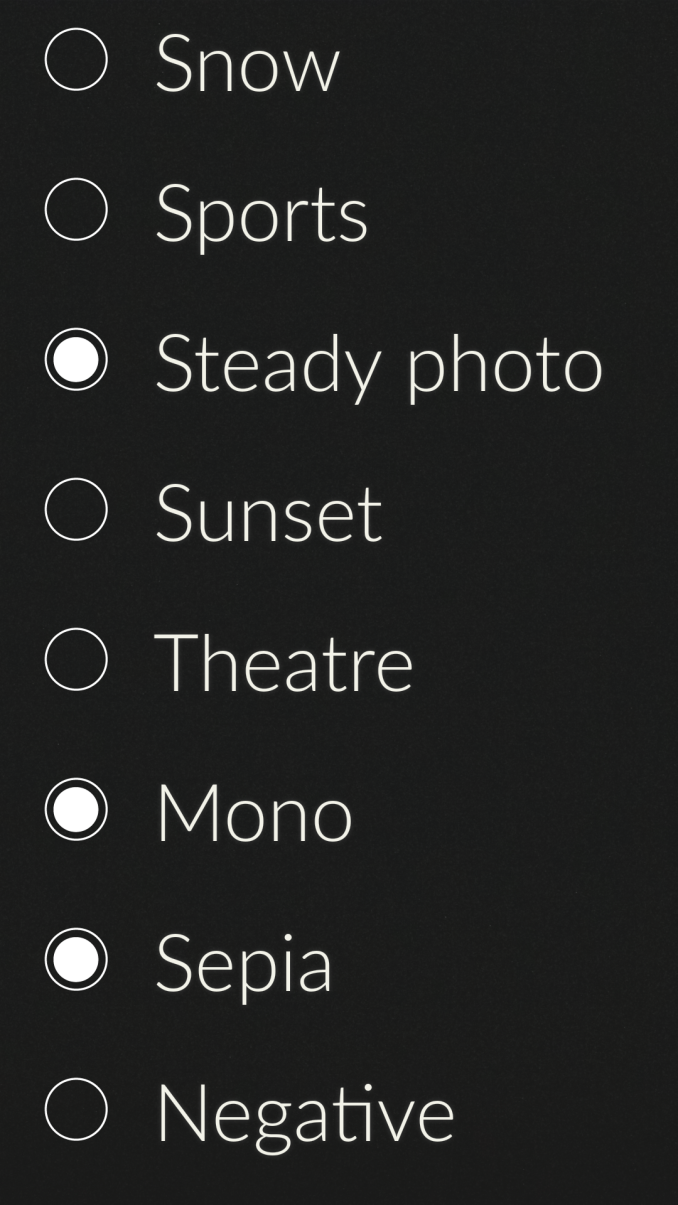
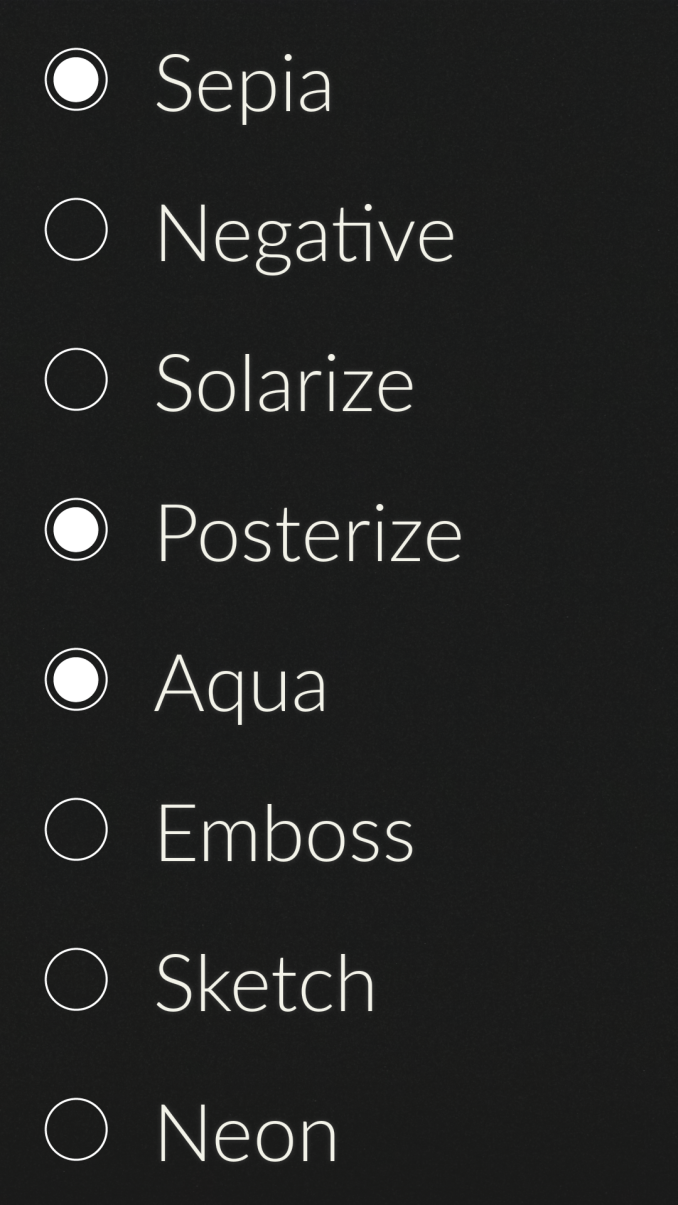
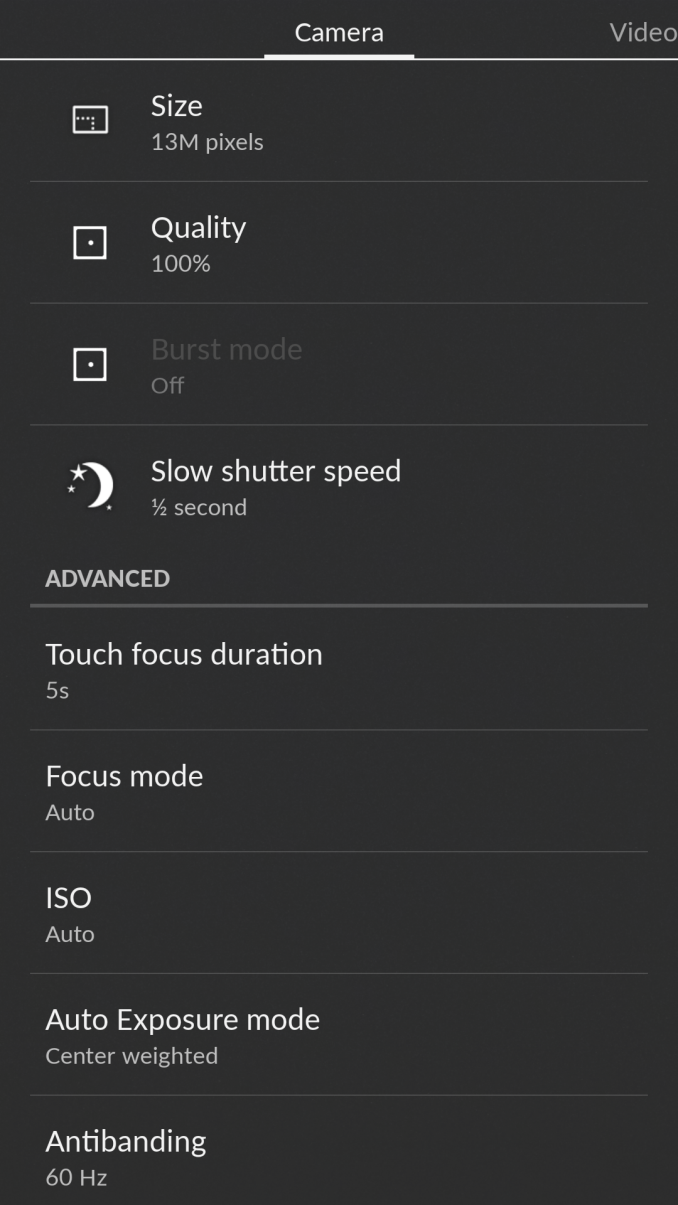









148 Comments
View All Comments
Anonymous1a - Thursday, November 20, 2014 - link
Really, this phone is like over six months old! And, you're reviewing it now? The whole point of a review is to help buyers make up their mind. Not a lot of people start buying when a device is six months old.grayson_carr - Thursday, November 20, 2014 - link
To be fair, the phone still isn't straight up for sale. You can't just go to their site and have one shipped to you on the spot. You can only pre-order it.Bob Todd - Thursday, November 20, 2014 - link
To be even more fair, their comment (not yours) is completely retarded. Pre-orders are closed. Nobody reading this review can even buy one right now. Still invite only until another pre-order window opens. So I'd say the review is still quite timely.Allan_Hundeboll - Sunday, November 23, 2014 - link
If you know how to google you can find an invite in less than 10 minutes...Anonymous1a - Thursday, November 20, 2014 - link
So, just because they have a different business model, that means you should review it late? They may never open pre-orders proper for the One (in the way other companies do) so, if that's your rationale, Anandtech should never review the phone. Also, I don't know if you live in Asia, but, in some countries, you can actually just go to a shop and buy one. Yes, you'll pay a premium from $20-$50 but it will still be cheaper than competing phones.Anonymous1a - Thursday, November 20, 2014 - link
Also, how is it that OnePlus One is seen as the first device to challenge to challenge the $600+ flagship paradigm when Xiaomi has been doing this for at least two generations of devices?Socius - Friday, November 21, 2014 - link
Xiaomi makes devices targeted to the Asian market (think bands). These guys are making the same thing, but pushing the western markets hard with it. So it's basically higher quality Xiaomi for the masses.beggerking@yahoo.com - Thursday, November 20, 2014 - link
can you stop putting iphone benchmarks in the chart? everyone already know its biased and inaccurate.SanX - Thursday, November 20, 2014 - link
Great everything but the dark display and a bit ugly design. Good to have 6" and even 6.5" model too at the expense of bezel. Another good unknown Chinese brand is Zopo, I'm happy with its 6" phone for more then a year. No one including Apple beats its screen and battery life.frombauer - Thursday, November 20, 2014 - link
Want leading battery life with a mannageable size? Sony Z3 Compact. Loving mine, 4.6" might be a bit small, but it's light, fits a pocket nicely and lasts FOREVER on a charge. And has a full speed Snapdragon 801 inside driving a 720p screen, which makes it scream.